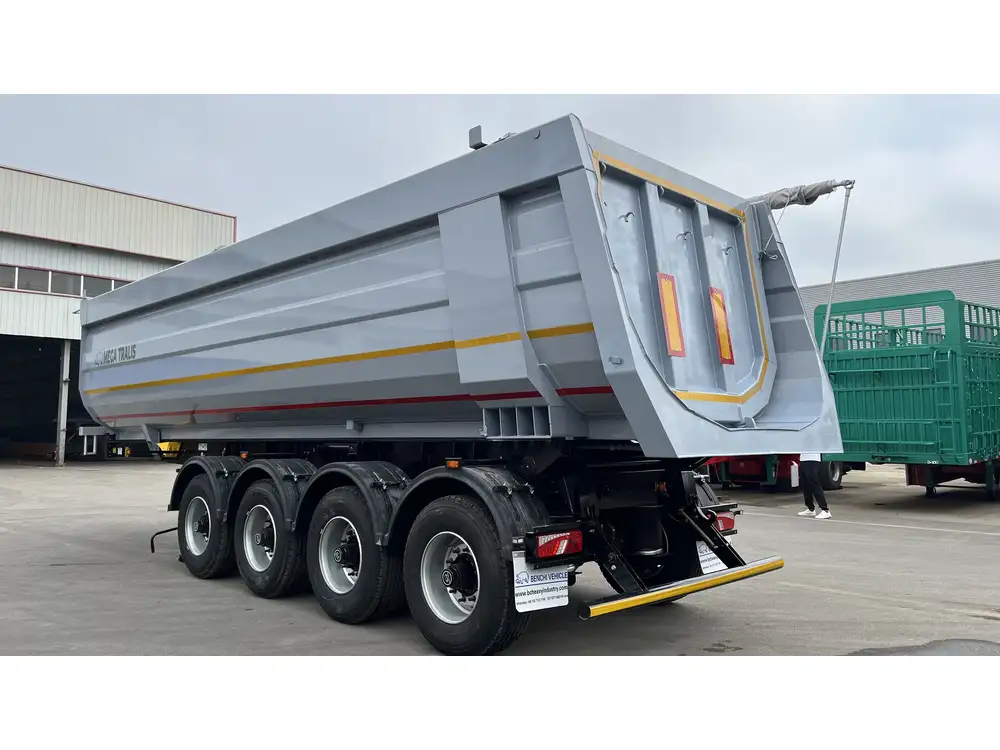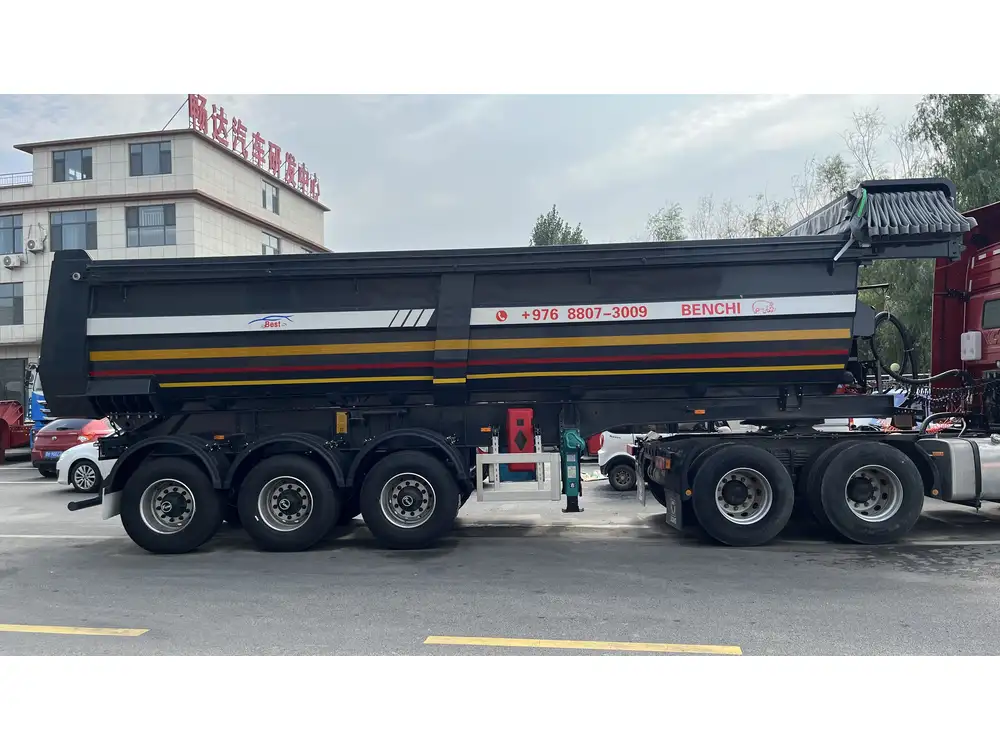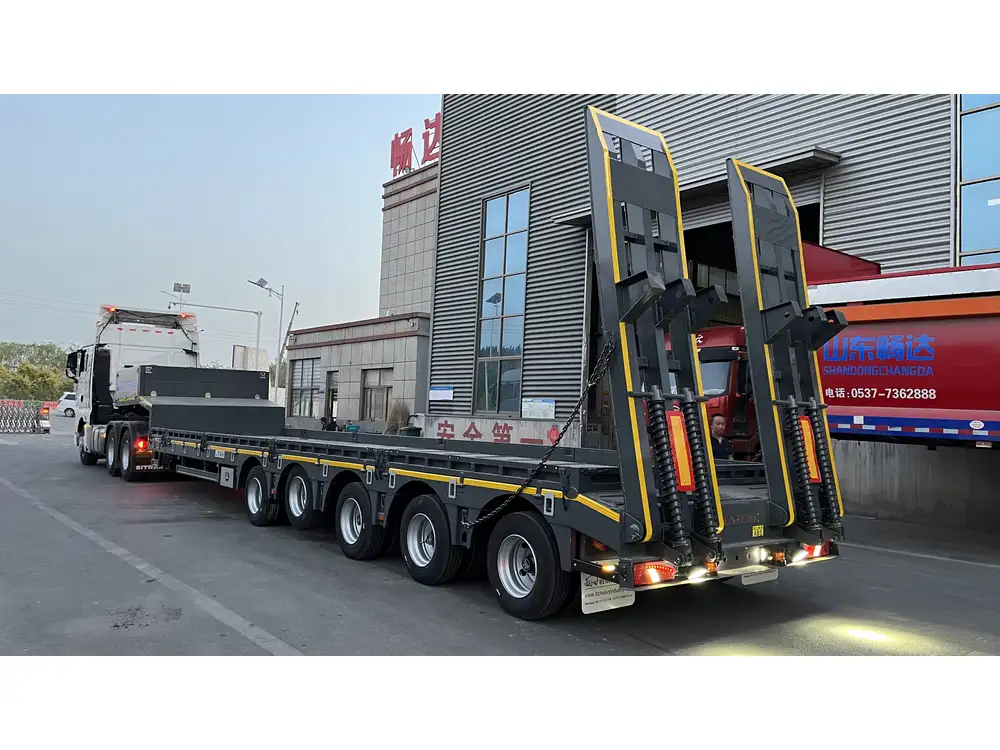In the realm of freight transportation, semi-flatbed trailers stand out for their robustness and versatility. These trailers are essential for hauling heavy and oversized loads. A question frequently posed by logistics professionals and road freight operators alike is, “How tall is a semi-truck flatbed trailer?” The answer may seem straightforward, yet it encompasses numerous factors that can affect the overall height of these trailers. This article delves into the intricacies of semi-truck flatbed trailers, shedding light on their dimensions, applications, and critical considerations to enhance your understanding.
Standard Heights for Semi Flatbed Trailers
Typical Height Range
The standard height of a semi-flatbed trailer generally falls between 48 to 60 inches (4 to 5 feet) from the ground to the top of the deck. The height can vary based on trailer design and manufacturer specifications. When combined with the height of the truck, it is crucial to account for overall vehicle and cargo height, particularly for road safety and compliance with legal limits.
| Trailer Type | Height (inches) | Height (feet) |
|---|---|---|
| Standard Flatbed | 48 to 60 | 4 to 5 |
| Step Deck | 34 to 38 | 2.8 to 3.2 |
| Lowboy Trailer | 18 to 22 | 1.5 to 1.8 |

Variability Factors
Variations in heights can stem from several factors, including:
- Customized Trailer Builds: Many manufacturers offer options for custom builds, leading to height variations depending on client specifications.
- Load Type: Specialized loads may require specific configurations that influence the trailer’s height.
- Trailer Design: Different types of flatbed trailers, such as double-drop trailers or step-decks, are designed with varying heights to accommodate specific loads.
Legal Height Limits for Trucking
Maximum Height Regulations
Understanding legal height regulations is crucial for trucking companies, ensuring compliance while transporting loads. Most U.S. states adopt a maximum height limit of 13.6 feet (or 162 inches) for trucks and trailers combined. However, regulations can differ across regions, and drivers must remain well-informed about local laws to avoid penalties.

Permit Requirements for Overheight Loads
For loads exceeding the standard height limits, acquiring permits is a necessity. This process includes provisions for:
- Route Planning: Identifying routes with low bridges and overhead clearances.
- Escort Vehicles: For exceptionally tall loads, a pilot vehicle may be required to navigate effectively.
- Notification to Authorities: Notifying local authorities about your transportation plans, particularly when expected to affect traffic flow.
Key Considerations for Semi Flatbed Trailers
Weight Distribution
Proper weight distribution across a flatbed trailer is crucial to maintain stability during transit. An unevenly loaded trailer can lead to handling issues, increasing the risk of accidents. Employing methods such as load securement and weight distribution analysis can significantly enhance stability and safety.

Loading and Unloading Procedures
Ensuring safe and efficient loading and unloading of flatbed trailers involves best practices, including:
- Use of Ramps: When handling heavy equipment or oversized loads, using properly rated ramps can make loading and unloading safer.
- Securing Loads: Utilizing straps, chains, and binders is essential for securing cargo and reducing movement during transport.
Maintenance and Inspection
Routine inspection and maintenance are vital to ensure the safety and longevity of a semi-flatbed trailer. Areas to focus on include:
- Braking Systems: Regular checks of brake performance are necessary to secure effective halting power.
- Tire Health: Monitoring tire pressure and tread depth prevents blowouts and enhances fuel efficiency.
- Structural Integrity: Inspecting the frame and suspension system for wear and damage helps maintain well-being during transit.
Types of Semi Flatbed Trailers
Understanding the various types of semi-flatbed trailers is fundamental to selecting the appropriate trailer for your needs. Here are some of the prevalent types:

1. Standard Flatbed Trailers
These are versatile trailers equipped with no sides or roof, allowing for a wide range of cargo. Standard flatbeds can accommodate various loads while ensuring easy access for loading and unloading.
2. Step Deck Trailers
Step deck trailers feature a lower deck height than standard flatbeds, allowing for the transportation of taller loads without exceeding legal height limits. The lower deck is typically around 34 to 38 inches high, providing additional vertical clearance.
3. Lowboy Trailers
Lowboy trailers are designed primarily for transporting heavy machinery and oversized items. With a deck height of approximately 18 to 22 inches, they allow for the transportation of tall equipment that would otherwise exceed standard height limits.

Trailer Comparison
| Trailer Type | Height (inches) | Allowable Cargo Height | Best For |
|---|---|---|---|
| Standard Flatbed | 48 to 60 | Up to 13.6 feet | General freight, machinery |
| Step Deck | 34 to 38 | Up to 12.5 feet | Tall loads, machinery |
| Lowboy | 18 to 22 | Up to 14 feet | Heavy equipment, vehicles |
Challenges in Transportation
Weather Conditions
Transportation logistics can become complicated under challenging weather conditions. Rain, snow, and extreme heat can heavily impact driving visibility and road conditions. Ensuring suitable tarping or camouflaging for loads can effectively protect cargo from environmental factors.

Improper Load Securement
Failure to secure loads effectively can lead to dangerous accidents and cargo damage. Solid methods include using stakes, straps, or chains, ensuring cargo stays in place throughout the journey.
Health and Safety Regulations
Adhering to workplace regulations is essential for maintaining a safe working environment. Regular training for drivers and personnel on securing loads and handling heavy materials is paramount for enhancing operational safety.
Future Trends in the Flatbed Trailer Industry

Advancements in Technology
Emerging technologies such as telematics and GPS tracking are enhancing the efficiency of flatbed transportation. By monitoring real-time location and load status, companies can improve dispatch times and customer service.
Evolving Materials
The shift towards lighter yet stronger materials is revolutionizing trailer construction. Innovations such as aluminum frames and composite materials are reducing the overall weight of trailers, enabling greater payload capacity.
Regulatory Changes
As freight transportation regulations evolve, staying updated on new compliance requirements is vital. These may include:
- Environmental regulations aimed at reducing carbon emissions.
- Driver safety regulations that govern working hours and conditions.

Conclusion
Understanding how tall a semi-truck flatbed trailer is involves much more than simply stating dimensions. The intricacies of weight distribution, load securement, and compliance with legal regulations all play pivotal roles in the effective use of these valuable transport solutions. By comprehensively evaluating the different types of trailers, their applications, and emerging trends in the industry, stakeholders can make informed decisions that enhance operational efficiency, safety, and ultimately, profitability.
Embracing these insights will empower you to navigate the complexities of semi-flatbed transportation, ensuring successful hauling operations tailored to meet your unique logistical needs.



